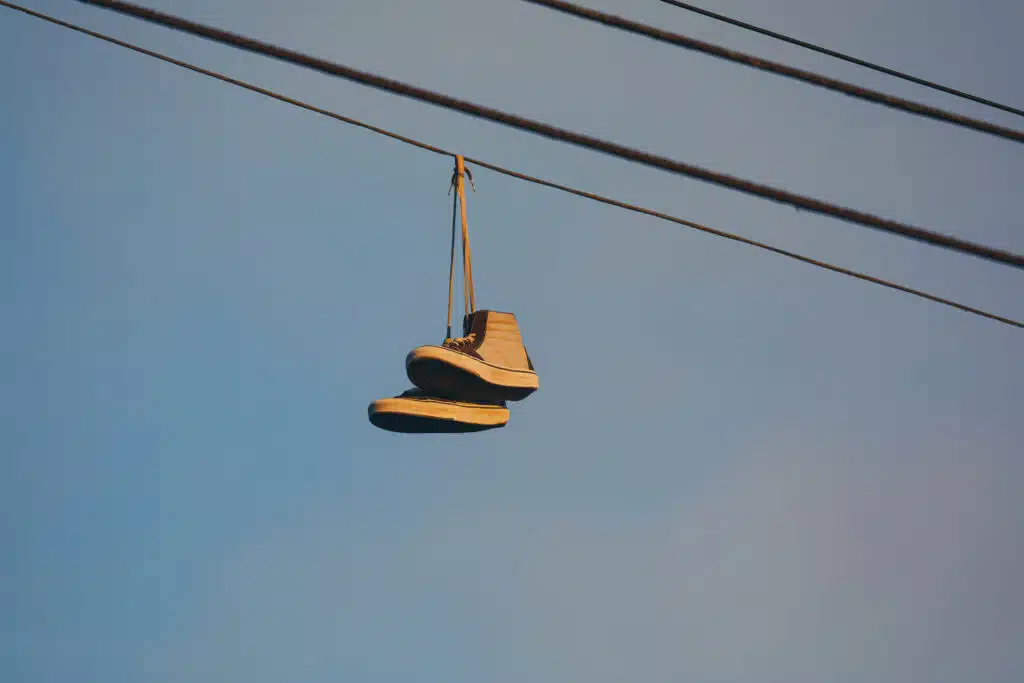By N.L. Jorgensen,
I’m a piano geek. Book nerd. Medieval music freak. I never dreamed I’d spend a week in Eugene, Oregon, at the Olympic track and field trials. But here I am.
It’s Monday, June, 21, 2021, and in a few days, my daughter will compete in the 10,000 meters. Right now, I’m absorbed in the men’s steeplechase.
Most Olympic track races are sprint, distance, marathon, or relay. Then there’s the steeplechase. This 3,000-meter event includes 28 barriers and seven water jumps. It’s a lesson in mastering a skill, only to discover 35 new obstacles.
To a wimp like me, the steeplechase appears absurd. It originated in the United Kingdom. Competitors ran from one town church (and its steeple) to the next. Along the route, they encountered low stone walls and creeks or rivers. To replicate these obstacles on a track, the modern race includes four barriers—each three feet high—plus one more barrier in front of a water pit. The 12-foot water pit is two-and-a-half feet deep near the barrier with an upward slope. The event debuted for men at the 1900 Olympics. In 2008, the Games removed one of steeplechase’s invisible barriers and added the event for females.
How does a runner navigate the course? Techniques vary. Some athletes employ proper hurdle technique. Some jump clear of the barriers. Some hop on top and push off, which is especially effective at reaching the shallower end of the water pit.
Today I’m rooting for Sean McGorty who trains with my daughter in the Bowerman Track Club. McGorty needs a top-five finish to automatically advance to the finals. He keeps pace near the front with a pack of fourteen.
Running in packs is a plus/minus. Runners conserve energy when someone in front battles the wind; there is a psychological advantage to running in a group; and drafting provides a boost of speed. But the pack can box in a runner; create a hazard when a competitor stumbles; and cause mental stress from endless quick decisions.
After a few laps, McGorty rounds the curve, right in front of me, as another runner steps on his foot, taking down the heel of his shoe.
What to do? I’ve seen runners lose a shoe and finish barefoot. But this is the steeplechase—with wood barriers. He might run with his shoe half-off, but how to keep from losing it? McGorty did what we all would wish for. He analyzed quickly and made a reasoned decision.
McGorty pulled off to the side. He attempted to slide his foot in the shoe. Tried again. Tried a third time and succeeded. Then, he calculated how much energy he could expend in mid-90s heat and still have enough left to finish the race.
McGorty completed the race in ninth place. In a complicated set of calculations, his time, compared to others in both heats, advanced him to the finals.
***
A few years ago, at a holiday concert, I perched on a high piano stool, accompanying my high school choir students. My teaching partner stood a few feet to my right, conducting. The gymnasium doors, propped open to the night air, failed to catch a breeze. Even in Wisconsin, a gymnasium heated up fast when filled with bodies. Boys looked moist, sweat gathering on their foreheads. Girls wore flushed cheeks, shades of red matching the poinsettias that decorated our makeshift stage. My own spine, under a long black dress, dripped perspiration that trickled past my hips.
As a high school choir director, I regularly mounted concerts featuring 300 singers for audiences of 1,000. These performances, like a steeplechase, presented obstacles: to dress every young man in shirt, tie, jacket, and polished shoes; dress every young woman in a blouse and floor-length skirt; execute a mic check; produce printed programs with concert notes; seat the audience; and orchestrate a procession where singers land on the right riser. These were the concert’s barriers and water pits. But it was the unforeseen obstacle that worried me, the one that, in the chaos of the event, might rip off a shoe.
As I played, I heard whispering. I glanced up. On the risers, a group of students huddled together. Earlier that week, I had issued instructions: “If someone appears unwell, help them to sit down.” Was that happening?
The boy in the center of the group shook his head. Probably insisting he was fine. The song continued as we were joined by guitar, drums, and a small group of descant singers. I hoped the audience was distracted and wouldn’t notice the commotion.
Then BOOM! It’s a terrifying sound when a body hits a wood floor. Within seconds, a parent darted to the stage area. She crouched over the fallen singer, who had apparently fainted.
What to do?
If I stopped playing, students would quit singing, perhaps panic. Girls would hover around the boy who fainted. Boys would fidget, maybe tussle.
I noticed a student in the second row sit down. Perhaps “mirror neurons,” creating sympathetic symptoms?
If I continued playing, would I appear heartless? Or would I instill calm and a sense of command? Would students follow my lead and finish the song? Or would they stop singing and cause the piece to drop in its own dead faint?
There were now two parents on stage. They crouched behind the piano, out of the audience’s view. They propped the student into a sitting position and removed his jacket and tie. I stole a glance. The boy’s face ranked somewhere between gray and bloodless.
With the boy conscious, out of sight, and tended by two adults, I continued playing, choosing the chaos of the moment over the unknown of quitting.
We finished the song, and soloists and instrumentalists stepped forward, acknowledging the audience with a bend at the waist. During the applause and a presentation of flowers to my teaching partner and me, the parents eased the boy to his feet. They draped his arms across their shoulders and escorted him off stage.
In Choral Conducting 101, there is no lesson plan for hot gymnasiums that induce fainting. I, like shoeless Sean McGorty, calculated several possible options and chose one. Also like Sean McGorty, I risked making the wrong choice.
As the crowd cleared, I found the fainting boy. Still pale and sweating, he rested his forearms on his knees and dangled a half-empty water bottle from his fingers. His parents assured me he would be fine—he had fainted in other stressful situations, and they were confident he would recover. They promised to update me the next morning.
At home, I placed my flowers in a vase, opened a beer, and made a bowl of popcorn. Adrenalin kept me awake for hours. But I needed sleep. Tomorrow would be another race—to recap the concert, stash equipment, and begin new songs. I hoped the barriers would be easily hurdled.
***
It’s now Saturday, June 26, five days after McGorty’s steeplechase and my daughter Gwen is warming up for the Olympic trials 10,000-meter race. Originally scheduled for the afternoon, officials bumped it to 7 a.m. because of excessive heat. The air registers 82℉, but experts estimate it’s over 100℉ on the track.
Most runners have stripped themselves of deodorant and lotion, removing any barrier to the body’s natural cooling. Some wear ice vests, or ice packs stuffed in their sports bras, or cooling towels draped over their necks.
Gwen hopes these 25 laps provide a positive outcome. The top three finishers will go to the Tokyo Olympic Games.
As 41 runners line up—an unusually large group—commentators predict some will stumble at the start, spilling over each other as they grapple for position.
The gun bangs and immediately, like deju vu from the steeplechase, a runner’s shoe is torn off. She moves to the side and attempts, over and over, without untying it, to slide in her foot. With each tick, the clock reduces her Olympic chances. Finally, she rejoins the race.
Meanwhile, Gwen establishes herself in the front pack, in eighth place, as commentators stress the importance of staying cool—to avoid overheating early in the 30-minute race.
But the inaugural laps are at 70-second pace—perhaps too fast for Gwen. My mind spins, a rodent on the wheel of perilous possibilities. Heat-related illness can cause muscle cramps, heat exhaustion, even life-threatening heat stroke.
After four laps, the front pack unravels into a string.
The brazen sun, combined with high humidity, lashes me, each ray a whip, sapping energy. My nerdy bucket hat keeps the fire from my head, but my sweaty shirt is so soaked it sticks to the plastic seat. I feel drained, and I’ve barely moved.
After 11 laps, the front pack separates from the field. There is a gap, and then a chase pack. Gwen runs there, in 20th place.
A jumbotron tracks the temperature. It is now 85℉, three clicks hotter than twenty minutes ago. The weather is in its own race to beat Oregon’s hottest June on record. Later, it will tie for 103℉.
The four leaders, who run 75-second laps—a pace rare in Gwen’s previous races—start to lap the field.
I check Gwen’s position. Olympic qualification was always a long shot, but to fall a lap behind demoralizes the spirit.
Competitors maintain a fast turnover as Gwen’s feet seem to move in reverse. Is she overheating? Has she overextended? My brain returns to the hamster wheel, scampering through the risks of physical exertion in extreme heat. I check the jumbotron. How many laps remain?
Then, with two laps to go, as she rounds the oval, Gwen drifts to the outside lanes. Where is she going? Why isn’t she running the shortest path? Slower, and slower, until she is only walking, Gwen leaves the convoy of runners, exits the track, and disappears into the tunnel. Her day is done. Only once, in her twenty-five years of racing, have I seen her quit. That was because of a fractured leg.
There is comfort knowing that in the tunnel she will find food. Fluids. An ice bath. Medical personnel. I hope that’s all she needs.
I text her husband. What’s going on? Is Gwen okay? Are you with her?
He responds that she’s fine. Disappointed, but safe. One of four to withdraw. He says to meet at the hotel in an hour.
After her cool-down, a briefing with her coach, and food and fluids, Gwen dips in the hotel pool to play with her four-year-old son, Stanley.
“I feel so bad,” she says. “What kind of example did I set for Stanley? I look like a quitter.”
Gwen ran too hard, too early. The effort sabotaged her results. “With two laps to go, I was afraid I’d get heat stroke. It wasn’t worth finishing if I ended up in the hospital.”
Is quitting always bad? Is finishing always good? Or is it admirable, when the shoe dangles, and danger lurks, to make the wise choice and quit?
It’s hard to know if Stanley learned a lesson that day. Over and over, he jumped in the pool, dove to the bottom, and resurfaced, blowing bubbles. “Hey, Mom, let’s race,” he said. “Ready? Set. Go!”
Stanley kicked, stroked, bobbed and flailed. Inching out Gwen, he touched the other side of the pool. “I win,” he said. “But you did good, too, Mom.”
N.L. Jorgensen is a Wisconsin writer, teacher, and musician whose most recent book is middle-grade sports biography, “Gwen Jorgensen: USA’s First Olympic Gold Medal Triathlete” (Meyer & Meyer). Essays appear in Ms. Magazine (“Title IX’s Generational Divide: Mother Denied, Daughter Empowered”), (“The Offing (“Position”), River Teeth (“Resonance”), Wisconsin Public Radio (“Little Known Truths About Lilies of the Valley”), Cheap Pop (“The Speed of Life”), and elsewhere.

